Lifestyle
It’s called ‘ambiguous loss,’ and it plagues families of missing people
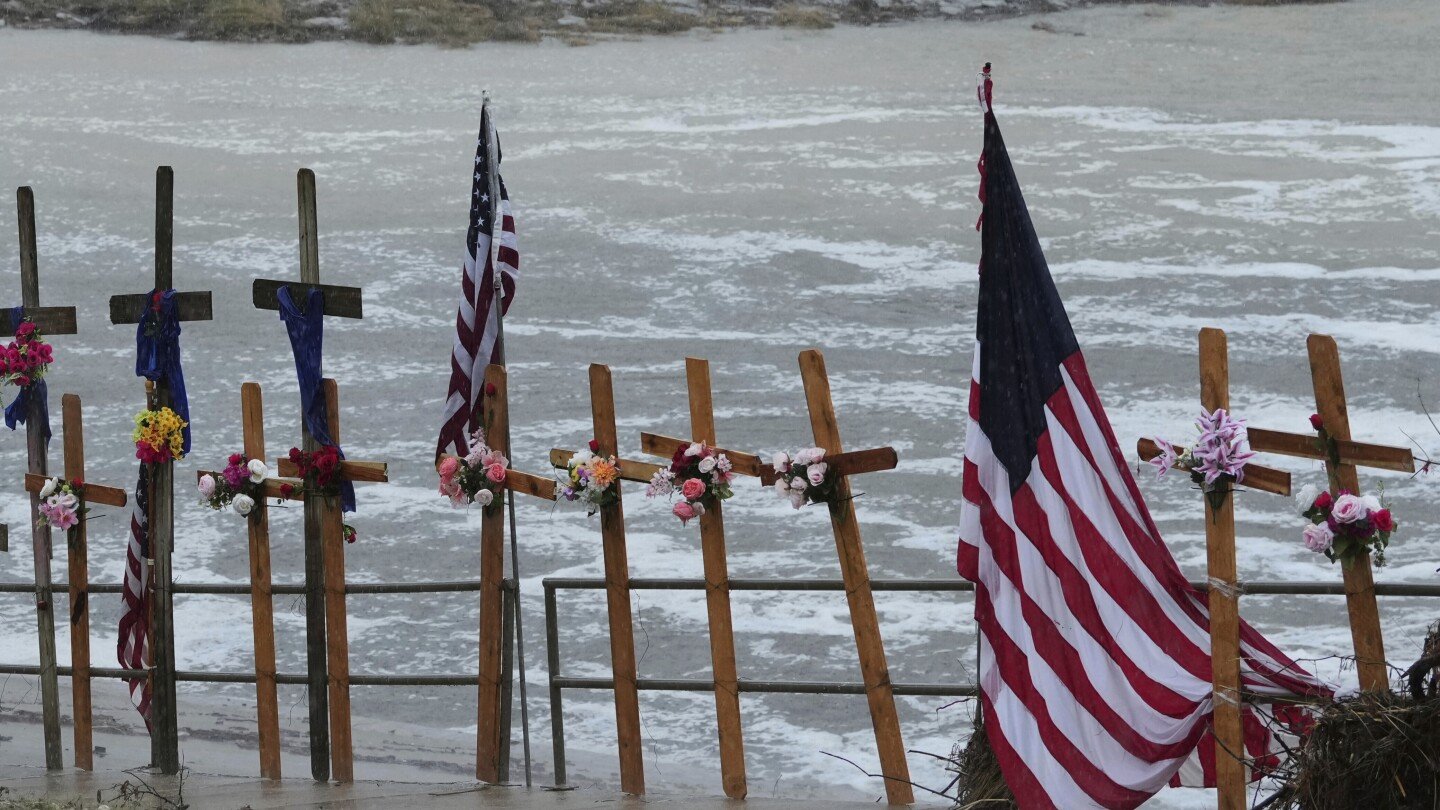
Rachel Ganz’s husband might be alive. But he might not be. More than three months after he was last seen near the Eleven Point River in Missouri amid severe flooding and evacuation orders, Jon Ganz is just … missing.
That leaves Rachel, 45, in a limbo of sorrow and frustration, awakening “every morning to a reality I don’t want to exist in.” She dwells there in a liminal state, she wrote by email July 11, with a stream of questions running through her head: “Is he trapped by debris in the river? Is he in a tangled mass of debris on the riverbank? Did he wander off into the forested area instead?” And one that remains stubbornly unanswered: “Are they ever going to find him?”
“Obviously I want my husband returned alive,” she wrote to The Associated Press, “though I am envious of those who have death certificates.”
It’s called ‘ambiguous loss’
Like the families of the missing after the July 4 Texas floods experienced for much of this month, Ganz is suffering from what grief experts call ambiguous loss: the agony of living in the absence of a loved one whose fate is uncertain. Humans across borders, cultures and time unfortunately know it well. Ambiguous loss can be intimate, like Ganz’ experience, or global, as in the cases of the missing from the Sept. 11 attacks, tsunamis in the Indian Ocean and Japan, the Turkey-Syria earthquake, the Israel-Hamas war and the Russian invasion of Ukraine.
The distinguishing feature, according to Pauline Boss, the researcher who coined the term in the 1970s, is the absence of ritual — a wake, a funeral, throwing dirt on a grave — to help the families left behind accept the loss. The only way forward, experts say, is learning to live with the uncertainty — a concept not well-tolerated in Western cultures.
“We’re in a state of mind, a state of the nation, right now where you either win or you lose, it’s either black or its white,” said Boss, a professor emeritus at the University of Minnesota who has researched ambiguous loss globally over a half century. “You have to let go of the binary to get past it, and some never do. They are frozen. They are stuck.”
Sarah Wayland, a social work professor from Central Queensland University in Sydney, says ambiguous loss is different from mourning because it’s about “repetitive trauma exposure,” from the 24-hour news cycle and social media. Then there is a devastating quiet that descends on the people left behind when interest has moved on to something else.
“They might be living in this space of dreading but also hoping at the same time,” Wayland said. “And they are experiencing this loss both publicly and privately.”
The uncertainty is like ‘a knife constantly making new cuts’
Heavy rains drove a wall of water through Texas Hill Country in the middle of the night July 4 , killing at least 132 people and leaving nearly 200 missing as of last week, though that number has dwindled as this week begins. Over just two hours, the Guadalupe River at Comfort, Texas, rose from hip-height to three stories tall, sending water weighing as much as the Empire State building downstream roughly every minute it remained at its crest.
Those without bodies to bury have been frozen in a specific state of numbness and horror — and uncertainty. “It’s beyond human imagination to believe that a loved one is dead,” Boss says.
This feeling can come in any global circumstance. Lidiia Rudenko, 39, represents a group of families in Ukraine whose relatives are missing in action. Her husband, Sergey, 41, has been missing since June 24, 2024, when his marine brigade battled the Russian army near Krynky. He’s one of tens of thousands of Ukrainians missing since the Russian invasion in 2022. And she is one of thousands in Ukraine left behind.
“Some people fall into grief and can no longer do anything, neither act nor think, while others start to act as quickly as possible and take the situation into their own hands, as I did,” Rudenko said. “There are days when you can’t get out of bed,” she said. “Sometimes we call it “getting sick. And we allow ourselves to get sick a little, cry it out, live through it, and fight again.”
For nearly a decade, Leah Goldin was part of a very small number of people in Israel with the dubious distinction of being the family of of a hostage.
Her son, Hadar Goldin, 23, a second lieutenant in the Israeli army, was killed, then his body taken on August 1, 2014. A blood-soaked shirt, prayer fringes and other evidence found in the tunnel where Goldin’s body had been held led the Israeli army to determine he’d been killed, she said. His body has never been returned.
Her family’s journey didn’t dovetail with the regular oscillations of grief. They held what Leah Goldin now calls a “pseudo-funeral’ including Goldin’s shirt and fringes, at the urging of Israel’s military rabbis. But the lingering uncertainty was like a “knife constantly making new cuts.”.
In the dizzying days after Hamas’ attack on southern Israel on Oct. 7, 2023, the Goldin family threw themselves into attempting to help hundreds of families of the 251 people Hamas had dragged into Gaza. But for a time, the Goldins found themselves shunned as advocacy for the Oct. 7 hostages surged.
“We were a symbol of failure,” Leah Goldin said. “People said, ‘We aren’t like you. Our kids will come back soon.’” She understood their fear, but Goldin, who had spent a decade pushing for Hamas to release her son’s body, was devastated by the implication. In time, the hostage families brought her more into the fold, learning from her experience.
Hamas still holds 50 Israeli hostages, fewer than half of whom are believed to be alive. In Gaza, Israel’s offensive has killed nearly 59,000 Palestinians, more than half of them women and children, according to Gaza’s Health Ministry, which doesn’t say how many militants have been killed but says over half of the dead have been women and children. Thousands of the dead are believed to be buried under rubble throughout the enclave.
How to support families of the missing — and what’s not helpful
Ganz, whose husband went missing in Missouri in April, said the sheriff’s department and others searched far and wide at first. She posted fliers around the town where his car was found, and on social media. Then someone accused her of “grieving without proof,” a remark that still makes her fume.
“One of my biggest frustrations has been people stating, ‘If you need anything, please let me know,’” Ganz said. That puts the burden on her, and follow-through has been hard to come by, she said. “We already have enough ambiguity.”
She’s thinking about setting up a nonprofit organization in Jon’s honor, dedicated to breaking the stigma against men getting therapy, to show “that it’s not weak.” That tracks with Goldin’s thinking that taking action can help resolve loss — and with Rudenko’s experience in Ukraine.
Boss recommends separate community meetings for families of the confirmed dead and those of the missing. For the latter, a specific acknowledgement is helpful: “You have to first say to the people, ‘What you are experiencing is an ambiguous loss. It’s one of the most difficult kinds of losses there is because there’s no resolution. It’s not your fault,’” Boss said.
In Ukraine, Rudenko said it helps to recognize that families of the missing and everyone else live in “two different worlds.”
“Sometimes we don’t need words, because people who have not been affected by ambiguous loss will never find the right words,” she said. “Sometimes we just need to be hugged and left in silence.”
Lifestyle
Birmingham mourns the death of native son Ozzy Osbourne
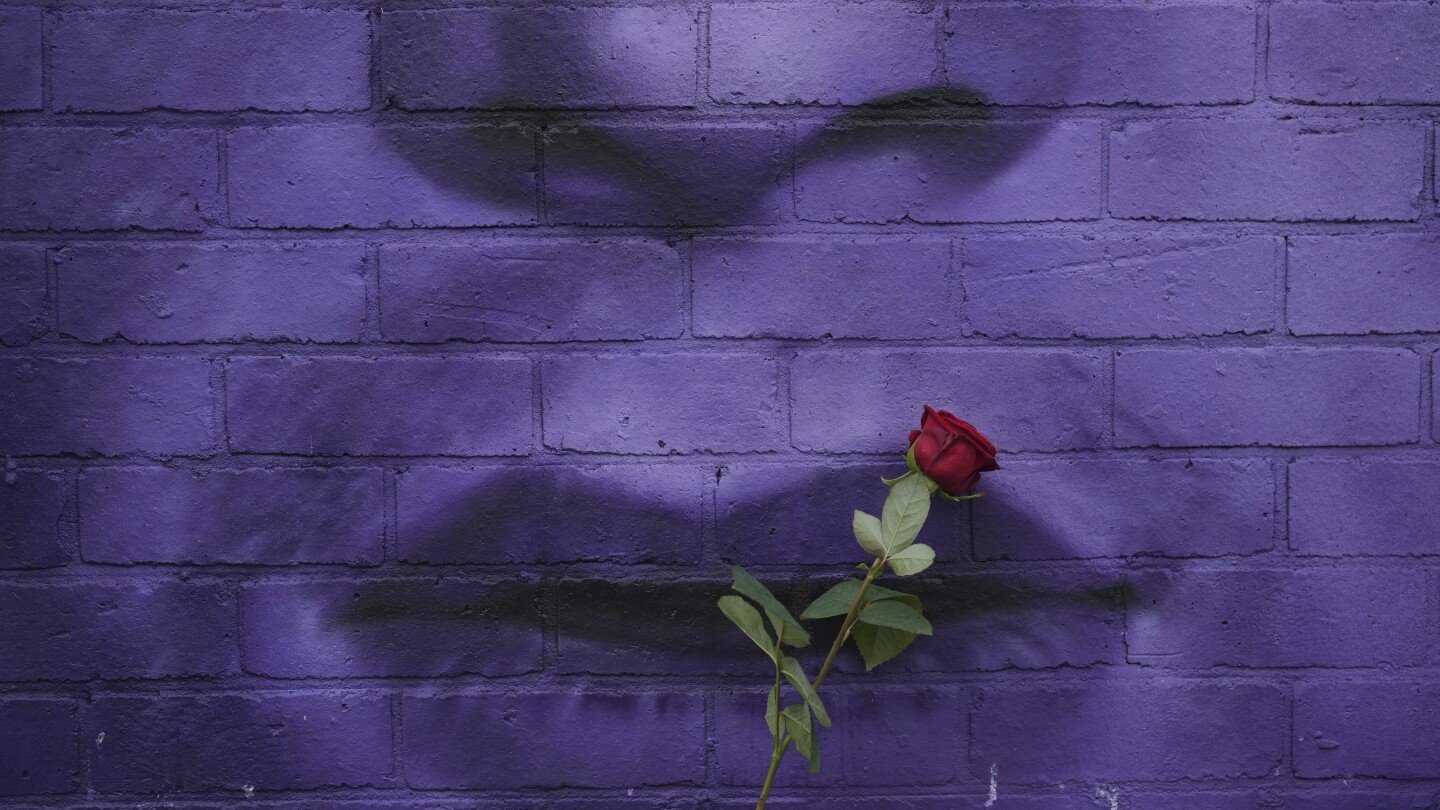
BIRMINGHAM, England (AP) — Ozzy Osbourne’s fans had sensed the end was near.
At his final show just a few weeks ago, admirers watched the heavy metal icon perform while seated on a black throne and knew it would likely be the last time they saw the lead singer of Black Sabbath. He died Tuesday at age 76.
So there was little surprise Wednesday as they made pilgrimages to sites around Birmingham, the city in central England where Osbourne grew up and the band was formed.
Outside the Crown Pub, where Black Sabbath played its first gig, Daria DeBuono, 59, and Stephen Voland, 32, both from New York, described the bond the rockstar had with his fans during that farewell show at the city’s Villa Park stadium. Even though he stayed seated throughout, the man nicknamed the Prince of Darkness reveled in the embrace of the crowd, they said.
“It’s like that is what he was living for, that is what he was keeping himself alive for, was to have that final glorious moment of love,” DeBuono said. “And being in the crowd you can just feel the love in the arena that day. It was just very emotional.”
Voland completed her thought.
“When I was watching the show I told her, ‘This is like a living memorial that he gets to enjoy,’” he said. “All this hard work and everyone is here for him. I just felt like it was a cool thing not knowing that this was happening very soon after.”
The original members of Black Sabbath reunited for the first time in 20 years on July 5 for what Osbourne said would be his final concert. Osbourne had been diagnosed with Parkinson’s disease in 2019.
“Let the madness begin!” he told the 42,000 fans packed into Villa Park as the show got underway.
On Wednesday, Birmingham sites linked to Black Sabbath became magnets for fans of the band’s front man, who built a second career as a star of the reality TV show “The Osbournes.”
They gathered around the bull in Birmingham New Street station, which was created for the 2022 Commonwealth Games and is known as Ozzy. And they trooped to a mural on Navigation Street that was painted in honor of Black Sabbath’s farewell concert.
“He’s one of us,” West Midlands region Mayor Richard Parker said at the mural. “There is an enormous amount of pride — he was forged by this place and he put this place on the map, and everyone could relate to him.”
But the biggest draw was the Black Sabbath bench, where fans can take selfies alongside life-size images of the four band members.
The bench, which was unveiled on the Broad Street canal bridge in 2019, has been surrounded by tributes to Osbourne.
“I think it is so beautiful that he got to finish and do his wish before he finally passed,” said Matthew Caldwell, 36, of Stourbridge, just west of Birmingham. “Very sad but incredible.”
Lifestyle
Edmunds: Five expert tips to make cross-country EV driving easy
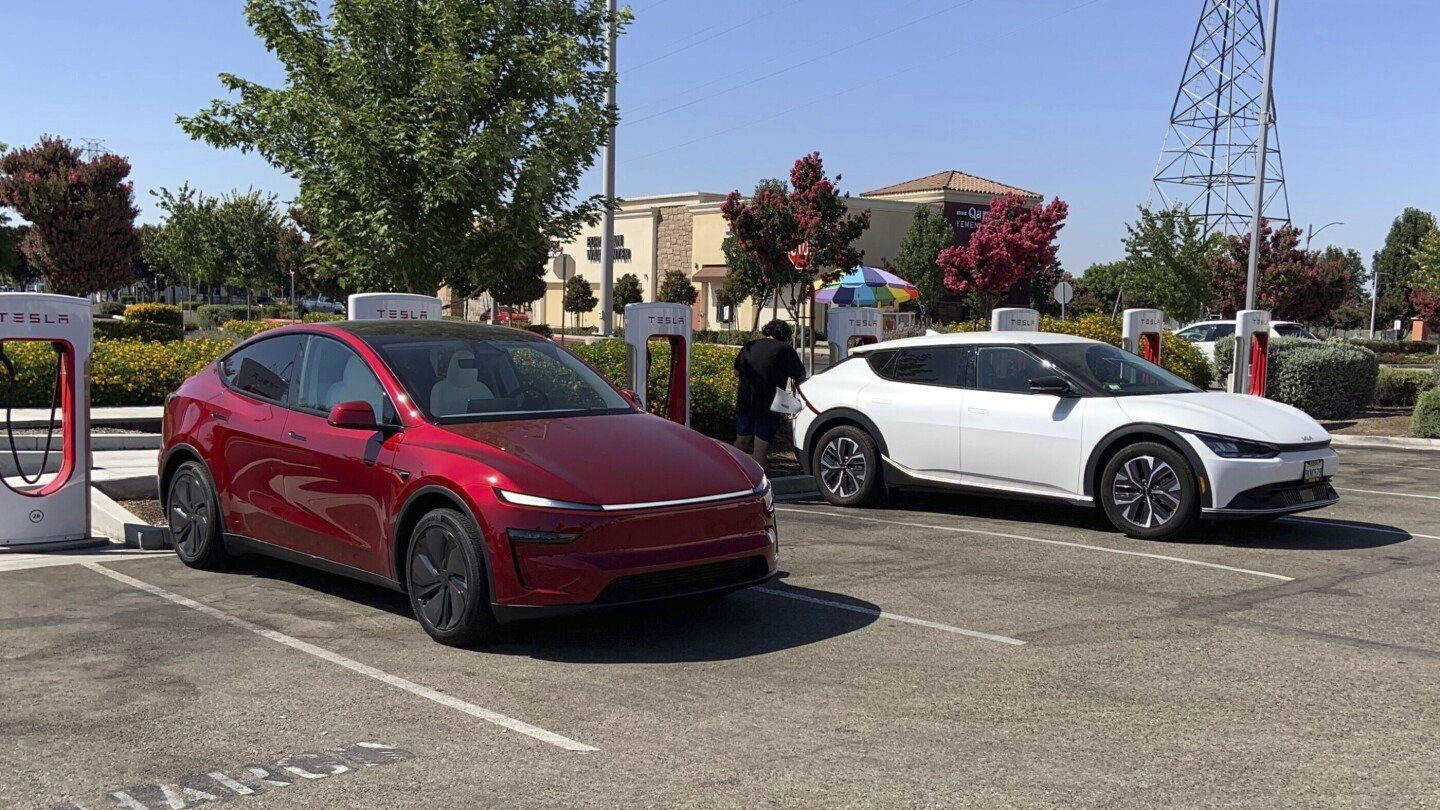
The idea of a cross-country road trip in an electric vehicle might seem daunting. After all, it’s not hard to envision getting stranded on the side of the road with a depleted battery or being stuck in a parking lot, charging for hours. But there are ways to easily avoid these worst-case scenarios. The experts at Edmunds have plenty of experience driving electric vehicles, and here they share their five best tips on how to make cross-country driving in an EV easy.
Use EV route planning applications
Minimizing the number of charging stations you visit and your time at them is key to efficient road-tripping in an EV. To accomplish this, use a route planning application. A route planner helps you determine where and when you should stop to charge to reach your destination.
The navigation system in most new EVs typically has this functionality built in. You simply enter your destination, and the navigation system automatically calculates where you will need to charge along your route. In our experience, Tesla vehicles have the best route planning capability. EVs that utilize Google Maps as their onboard navigation system have a similar capability. Many of the latest EVs from General Motors, such as the Chevrolet Equinox EV, have Google Maps integration.
Alternatively, you can use an EV route planning smartphone app such as A Better Route Planner (ABRP) or PlugShare. We prefer ABRP because it’s available as an app or through an internet browser. It also shows more details at each stop, like the expected battery percentage. When using a route planner, stick to Level 3 fast charging stations when driving. Slower Level 2 stations will take hours but are ideal for overnight charging.
Use Tesla charging stations
The Tesla Supercharger network of fast charging stations is the largest in the country. We recommend using them on a cross-country trip because they are usually very reliable and have more charging stalls per location than most networks. Teslas have access to them and certain non-Tesla EVs are also eligible to use them, but most non-Tesla EVs need an adapter to charge at a Tesla Supercharger. Check with your local service center or search online to determine if your EV is compatible. If you have a non-Tesla EV that has access, change the settings in your route planner to include Tesla stations.
If your EV cannot charge at Tesla stations, you’ll need to utilize other third-party charging station networks. Some of the largest networks include Electrify America, EVgo and ChargePoint.
Have a backup plan, and leave a range cushion
When planning a route that does not use Tesla Superchargers, it’s best to have a backup charging station for each stop. Charging stations can sometimes be out of order, and in some cases, like during a holiday or on busy highways, there could be long lines. To find the status of a specific charging station, download the app of the company the station belongs to. Make sure to leave yourself enough range to make it to your backup station as well.
Stay in hotels with on-site charging stations
Staying at hotels with on-site charging stations can save time and money. Hotel charging stations are typically Level 2 stations that can fully charge your battery overnight, allowing you to start your trip immediately instead of charging before you hit the highway. They are usually more affordable than fast charging stations, and in some cases, are free. One way to find hotels with charging stations is by using the PlugShare app. This app contains a database of charging stations, and you can filter it to show stations connected with lodging locations.
Use charging stations that have amenities
It’s fair to expect that each charging stop you make in your EV will take 20-45 minutes. To make the most of that time, charge at stations with a convenience store, retail store or restaurant nearby. That way, you can use the bathroom, grab some stacks or even get a full meal while your vehicle is charging. Many charging stations are located near stores or restaurants, but not all. You can use Google Maps or similar smartphone apps to find out what’s within walking distance of the charging stations you plan on using. You can change the stations your route planner recommends as long as they aren’t too far away.
Edmunds says
Planning a cross-country trip in an EV takes extra effort, but doing it properly can make the journey nearly as smooth as in a gas-powered car. Give yourself access to as many fast charging stations as possible by choosing an EV that’s capable of using Tesla Supercharger stations.
____
This story was provided to The Associated Press by the automotive website Edmunds.
Michael Cantu is a contributor at Edmunds.
Lifestyle
Venus Williams’ win at age 45 resonates for several reasons
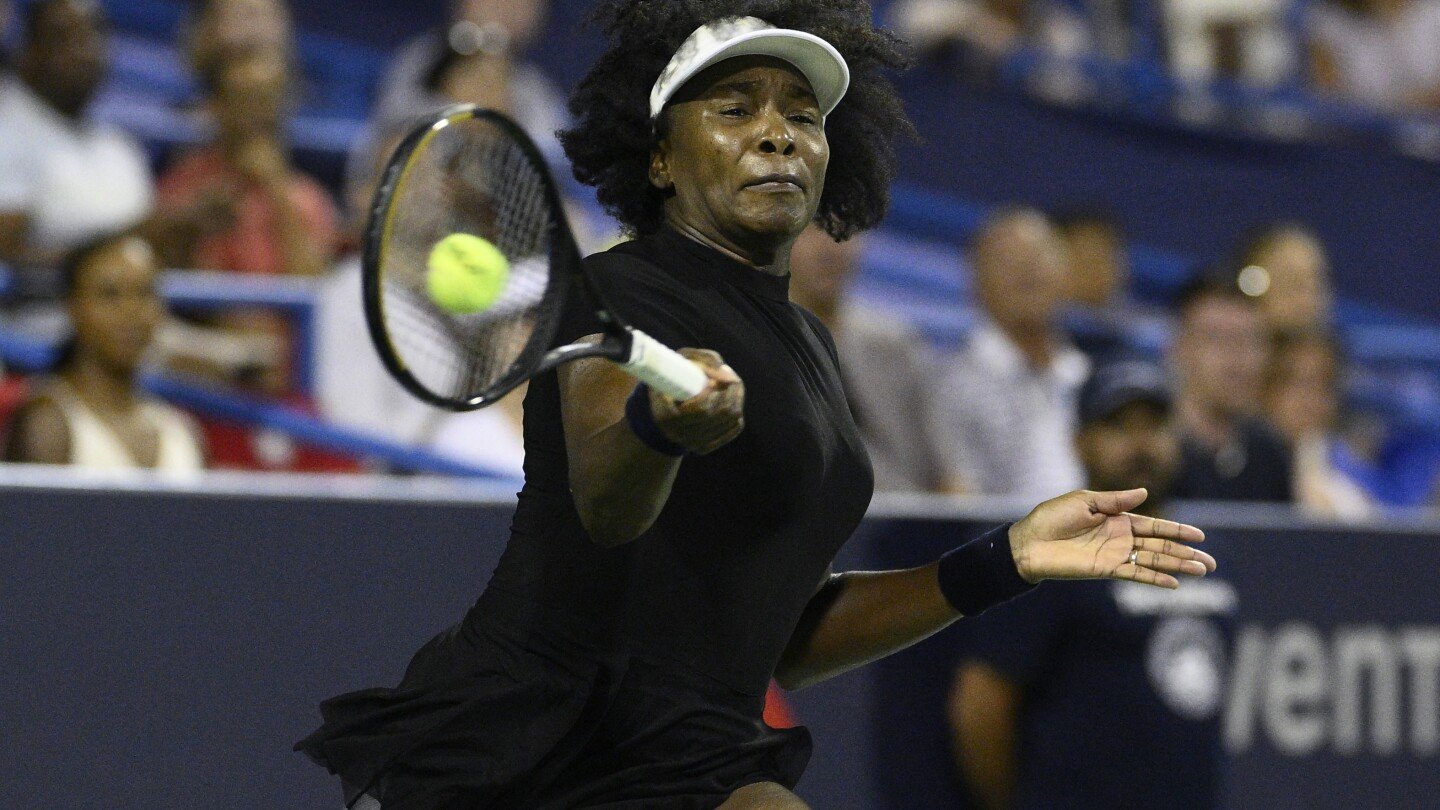
WASHINGTON (AP) — There are plenty of reasons why this particular victory by Venus Williams in this particular tennis match — just one of hundreds — resonated with so many folks.
That she’s 45, for one thing. Only one woman, Martina Navratilova, ever has won a tour-level singles match while older; her last victory came at 47 in 2004.
That Williams hadn’t entered a tournament anywhere in 16 months.
That she needed surgery for uterine fibroids.
AP AUDIO: A historic win by 45-year-old Venus Williams resonates and shows there are no limits for excellence
A tennis icon has become the oldest woman to win on the WTA Tour in 21 years. Correspondent Gethin Coolbaugh reports.
And when asked Tuesday night after beating her 23-year-old opponent, Peyton Stearns, 6-3, 6-4 at the DC Open what message others might take away from that performance and that result, Williams was quick to provide an answer.
“There are no limits for excellence. It’s all about what’s in your head and how much you’re able to put into it. If you put in the work mentally, physically, and emotionally, then you can have the result,” she said. “It doesn’t matter how many times you fall down. Doesn’t matter how many times you get sick or get hurt or whatever it is. If you continue to believe and put in the work, there is an opportunity, there is space, for you.”
Williams has been winning at tennis for decades. Her pro debut came when she was 14. Her first Grand Slam title came at Wimbledon in 2000, less than a month after her 20th birthday.
She accumulated four major singles trophies before Stearns was born and eventually wound up with seven, five at Wimbledon and two at the U.S. Open, plus another 14 in women’s doubles — all with her sister Serena — and two in mixed doubles.
“I have so much respect for her to come back here and play, win or lose. That takes a lot of guts to step back onto court, especially with what she’s done for the sport,” said Stearns, who is ranked 35th and won NCAA singles and team titles at the University of Texas. “You have a lot behind you. You have accomplished a lot. And there is a lot of pressure on her and to kind of upkeep that at this age. So massive credit to her for that.”
There were challenges along the way for Williams, none more public than the diagnosis in 2011 of Sjögren’s syndrome, an energy-sapping auto-immune disease that can cause joint pain.
More recent was the pain from fibroids — noncancerous growths — and shortly before the DC Open, Williams said: “Where I am at this year is so much different (from) where I was at last year. It’s night and day, being able to be here and prepare for the tournament as opposed to preparing for surgery.”
As thrilled as the spectators — “Who I love, and they love me,” Williams said — were to be able to watch, and pull, for her under the lights Tuesday, other players were rather excited about it, too.
“I commend her so much for being out here,” said Taylor Townsend.
Naomi Osaka’s take: “She’s, like, the queen. There’s a royal air around her.”
“She’s one of the best athletes of all time,” Frances Tiafoe said. “Her and her sister, they’re not only great for the women’s game, not only great for women’s sports, but they are so iconic.”
Yet, there were some on social media who wondered whether it made sense for the tournament to award a wild-card entry to Williams instead of an up-and-coming player.
DC Open chairman Mark Ein said it took him about two seconds to respond “Of course” when Williams’ representative reached out in April to ask whether a spot in the field might be a possibility.
A reporter wanted to know Tuesday whether Williams took any satisfaction from proving doubters wrong.
“No, because I’m not here for anyone else except for me. And I also have nothing to prove. Zip. Zero. I’m here for me, because I want to be here,” she said. “And proving anyone wrong or thinking about anyone has never gotten me a win and has never gotten me a loss.”
___
Howard Fendrich has been the AP’s tennis writer since 2002. Find his stories here: https://apnews.com/author/howard-fendrich. More AP tennis: https://apnews.com/hub/tennis
-

 Sports4 days ago
Sports4 days agoUnrelenting Scottie Scheffler leaves Open field in his wake. Can anyone catch him?
-

 Africa5 days ago
Africa5 days agoAtlas Lionesses roar into Afcon semi-finals, sparking celebrations in Rabat
-

 Sports3 days ago
Sports3 days agoJess Carter: England defender steps back from social media after racist abuse, team condemns ‘online poison’
-
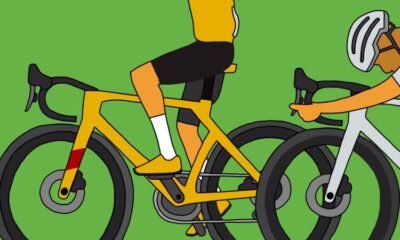
 Europe5 days ago
Europe5 days agoL’Etape du Tour: How amateurs measure themselves up to pros on one of the world’s toughest stages
-

 Asia3 days ago
Asia3 days agoBangladesh: 16 killed after air force jet crashes into Dhaka school
-

 Europe4 days ago
Europe4 days agoZelensky calls for ceasefire talks with Russia next week
-

 Europe2 days ago
Europe2 days agoWhy the administration’s latest allegations about the Russia investigation don’t add up
-

 Europe5 days ago
Europe5 days agoConstance Marten and Mark Gordon found guilty in their baby’s death




